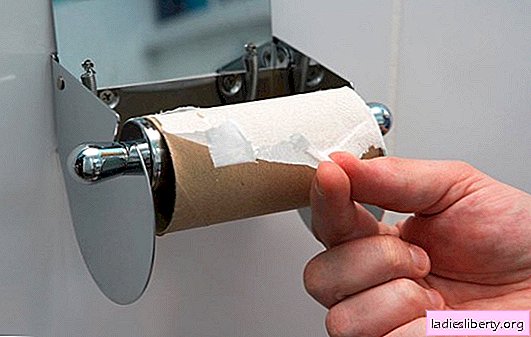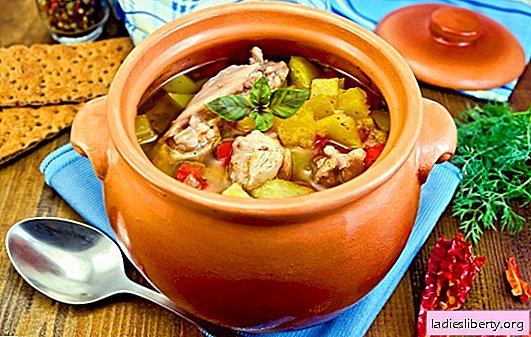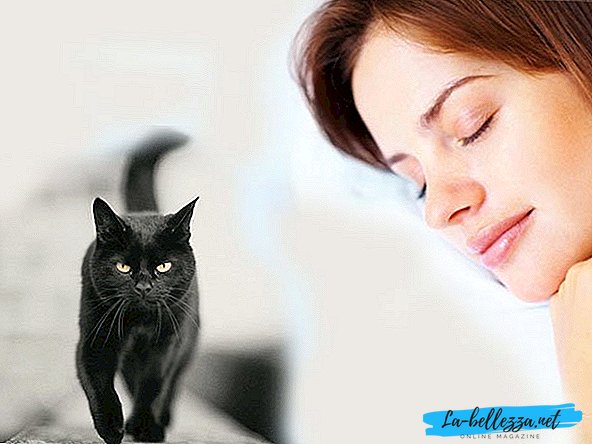
Renal failure is a pathological condition of the body in which the functioning of the kidneys is impaired.
This leads to improper exchange of nitrogen, water and electrolytes.
The disease is acute and chronic, and it occurs for a number of reasons, which only a doctor can detect.
In the treatment of this ailment, medications are used, but nutrition plays an important role.
Renal Diet - General Principles
The normal functioning of the kidneys enables the body to function "like a watch." The kidneys maintain the balance of water, the content of trace elements necessary for health, and remove toxic substances. If the functioning of such an important organ is disrupted, it is necessary to eat in such a way as to remove the load from the kidneys as much as possible, while not forgetting to saturate the body with vitamins and other useful substances.
A diet for kidney failure is the use of healthy fats, carbohydrates, and fiber. The patient's diet should contain vegetables, fruits, berries. It is better if these products are familiar. Vegetables are consumed in boiled, stewed, baked or slightly fried form. From fruits and berries, you can cook compotes and jelly, as well as prepare delicious jelly.
Diet for renal failure implies the maximum restriction of protein products, both animal and plant origin. Protein foods exert a tremendous strain on diseased kidneys.
Experts advise not to use salt when cooking. Sodium in salt is the culprit in water retention, causing swelling and hypertension. In case of impaired renal function, this condition is not desirable.
The kidneys (during their normal work) do a good job with excess phosphorus. This element is mostly found in protein products. However, diseased kidneys poorly perform their task, allowing phosphorus to adversely affect the skeletal system, causing joint problems.
Due to impaired functioning of the kidneys, the potassium content in the blood can increase sharply. Pathology causes general muscle weakness, heart rhythm disturbance, and even heart failure.
Diet for renal failure and renal colic includes limiting potassium-containing foods. This element is also found in protein foods. To reduce the intake of potassium means automatically reduce the burden on the kidneys and improve the general condition. Bananas, dried fruits, nuts, avocados, wheat, and legumes should be excluded from the menu.
So, the main important concepts of diet therapy in renal failure:
1. The maximum restriction of protein intake. Allowed up to 20-70 g per day (it all depends on the state of health). The "dose" is prescribed by a specialist.
2. Ensuring the supply of energy through fats and carbohydrates.
3. Inclusion in the diet of such a quantity of vegetables and fruits - a real "storehouse" of the most useful vitamins and minerals, so that it would be possible to cover the deficit of these substances most necessary for the body.
4. Culinary processing of products in order to improve their nutritional attractiveness. After all, salt-free food is no secret that it is fresh and not too tasty.
5. Limitation of salt and regulation of water intake in the body.
6. Introduction to the habit of traditionally spending the day of "unloading."
Kidney Diet - List of Prohibited and Allowed Products
A diet for kidney failure is characterized by a high-calorie diet, which distinguishes it from other nutrition systems. Why? If a body that suffers from impaired renal function does not receive many calories, then it will begin to expend its internal resources, namely proteins. Decaying, they increase the blood urea content. At the same time, a sick person gradually weakens and loses weight. This negative process is able to stop a high-calorie diet.
Prohibited foods for chronic renal failure:
• concentrated coffee, cocoa, tea, hot chocolate, as well as alcohol
• salty foods
• mushrooms
• refractory fats
• sorrel, spinach
• bean
• sausages
• canned food
• mustard, horseradish
• bananas, dried fruits, apricots
• garlic, radish
Products - substitutes for prohibited:
• sago groats, rice
• salt-free protein-free bread
• vegetable soups
• lean meat (veal, chicken, turkey, rabbit)
• low-fat fish
• familiar vegetables (potatoes, beets, carrots, pumpkin, tomatoes, greens)
• eggs (preferably not more than 1 per day)
• limited amount of dairy products
• weak infusion of tea, rosehip broth - a source of vitamin C, non-concentrated juices
• fruits in the form of jelly, mousse, jam, jam
• candies
• spices, which improve the taste of any, even the most dietary, dish. This is pepper, bay leaf, cinnamon, vanillin.
Attention! A diet for renal failure and renal colic should be prescribed by a doctor based on the individual characteristics of the disease.
Exemplary menu for renal colic
Renal colic, as such, is not a pathology in itself. Rather, it is a symptom of a negative process occurring in the body, indicating an obstruction of the ureter.
An attack of colic can be short-lived, and can last up to several days. In order to avoid pain, it is necessary to adhere to a certain diet, which involves removing the load from the kidneys.
Protein restriction is recommended first. Food should be varied and fractional, portions are small and satisfying.
Sample menu for the week:
1 day
Breakfast: Omelette from 1 egg, a small piece of bread with a thin layer of butter, weak tea (optional: green or black).
Dinner: Broth without meat with the addition of whole grains - barley, potato cues, milk.
Snack: Cottage cheese with berries, a glass of kefir.
Dinner: Chicken (boiled), vegetable salad, compote or juice.
2 day
Breakfast: Buckwheat (no milk), hard-boiled egg, tea.
Dinner: Rice soup, potato casserole, a slice of chicken, berry jelly.
Snack: Pumpkin, baked in the oven, a rosehip broth.
Dinner: Carrot salad, boiled squids, apple juice.
3 day
Breakfast: Milk noodles soup, 1 egg, yogurt or kefir.
Dinner: Pumpkin soup, pilaf with chicken, weak tea.
Snack: Cottage cheese casserole, apple juice.
Dinner: Mashed potatoes, stewed veal, kefir.
4 day
Breakfast: Millet porridge on water, yeast-free bread with jam, tea.
Dinner: Buckwheat soup, chicken, rice, pomegranate juice.
Snack: Watermelon
Dinner: Boiled vegetables, a slice of fish, tea.
5 day
Breakfast: Delicate milk wheat porridge (also on water), salt-free pancakes, coffee (weak).
Dinner: Potato soup, vegetable stew, tea.
Snack: Cheesecakes, jelly.
Dinner: Chicken pilaf, vinaigrette, cranberry juice.
6 day
Breakfast: Pancakes, cool egg, weak coffee.
Dinner: Soup with vermicelli, cauliflower with beef (baked), tea.
Snack: Baked apple, fermented milk product.
Dinner: Vegetable stew, salad (cucumbers, tomatoes), pear juice.
7 day
Breakfast: Corn porridge on the water, bread and butter, milk.
Dinner: Vermicelli soup, turkey stew, vegetables, tea.
Snack: Jelly from fruits.
Dinner: Boiled fish, baked potatoes, salad (beetroot), compote.
The above menu clearly demonstrates how varied the patient's menu should be. Compliance with the basic principles of nutrition will help to avoid unwanted relapses and bring recovery closer.
How to cook some diet meals?
1. Borsch without meat.
Components: root crops - beets (1 pc.), Medium potatoes (2 pcs.), Onions (1 pc.), Carrots (1 pc.), White cabbage (300 g), water (1.5 l).
Beets are washed, peeled, chopped and dipped in boiling water. Cook until tender. Onions, carrots are fried in vegetable oil, tomato is added.
In a boiling beet broth add potatoes (cut into slices), and after 10 minutes chopped cabbage. After boiling the cabbage, add the sauté, the borscht is brought to a boil and cooked for another 5 minutes. The recommended amount of salt is added to the finished dish.
2. Vegetable stew.
Potatoes (200 g) are washed, peeled, diced and stewed until cooked. Separately stew carrots (70 g), cabbage (50 g), beets (20 g), onions (20 g). All mixed and stewed for another 5 minutes in sour cream.
3. Potato soup.
Wash, peel and dice potatoes (300 g). With carrots (25 g), do the same and passer it in butter. Separate onions from carrots (1 pc.).
Potatoes are thrown into boiling water and boiled for 15 minutes, then onions and carrots are added. Give the soup a little boil. Before you start your meal, finely chopped greens are placed in the soup.
4. Potato patties.
Peel, wash and boil the potatoes (160 g). Then boil it and grind it hot. A quarter of the egg is added to the chilled puree. All mix and form patties, which are rolled in flour, spread on a baking sheet and baked in the oven until an appetizing golden crust is formed. Before you start to eat, pour the dish with sour cream.
5. Boiled fish.
The menu of the kidney diet necessarily includes boiled fish, which is prepared in such a way. Wash, peel and lower 700 g of zander, bream or cod in boiling water. Cooking time - 15 minutes.
The fish is cooked whole or cut into portions. When serving - put a piece of butter.
6. Baked apples.
Wash apples, core. Pour sugar into the resulting dimple. Pour water on a baking sheet (about 1 cup) and place apples side by side. Sprinkle with sugar on top. Bake in the oven for 10-15 minutes.
7. Casserole (vermicelli and cottage cheese).
Vermicelli is boiled in half a liter of water until partially cooked. Discard in a colander and allow it to cool slightly. 1 raw egg is added to the product, mixed and laid out in any greased form, which, of course, every housewife has in the kitchen. On top of the prepared vermicelli lay the curd (with the addition of sugar), and put the rest of the vermicelli on the curd. Baked in the oven, pouring oil on the dish.
Kidney Diet - What to Look For
Diet therapy for renal failure has some important points that must be taken into account:
1. Eating eggs is not prohibited. However, do not forget that this is a protein product. Therefore, if you ate an egg, then a portion of fish or meat per day is better to reduce.
2. Dairy products: milk, cottage cheese, kefir, yogurt, etc. are allowed. You can not eat cheese.
3. Meat must be selected lean. It can be boiled, baked, steamed. Say no should be fat, smoked meats, caviar, canned goods.
4. Bread and pastries are recommended without the use of salt and spices.
5. Cereals are allowed almost any. Everyone can choose according to their preferences.
6. A diet for kidney failure excludes the use of chocolate.
7. Freshly squeezed juices are recommended to be diluted with water (1: 1). You can drink black, green (weak) tea, herbal decoctions, weak coffee. Under the ban - carbonated drinks, mineral water with a high sodium content.
8. Special care should be taken when using salt in its pure form, or as part of pickles, pickles, canned goods. Even in the initial stage of the disease, the recommended dose is 2-3 g per day.
9. The amount of fluid consumed, including liquid food, should not exceed the amount of urine excreted by more than 500 ml.
So that the diet during the illness does not seem fresh and tasteless, to improve the taste it is allowed to add greens, some spices, sour vegetable juices, lemon juice to the dishes.
Adhering to the basic rules of the diet and following all the recommendations of a doctor, you can expect that in a short period of time you will forget about your illness.











